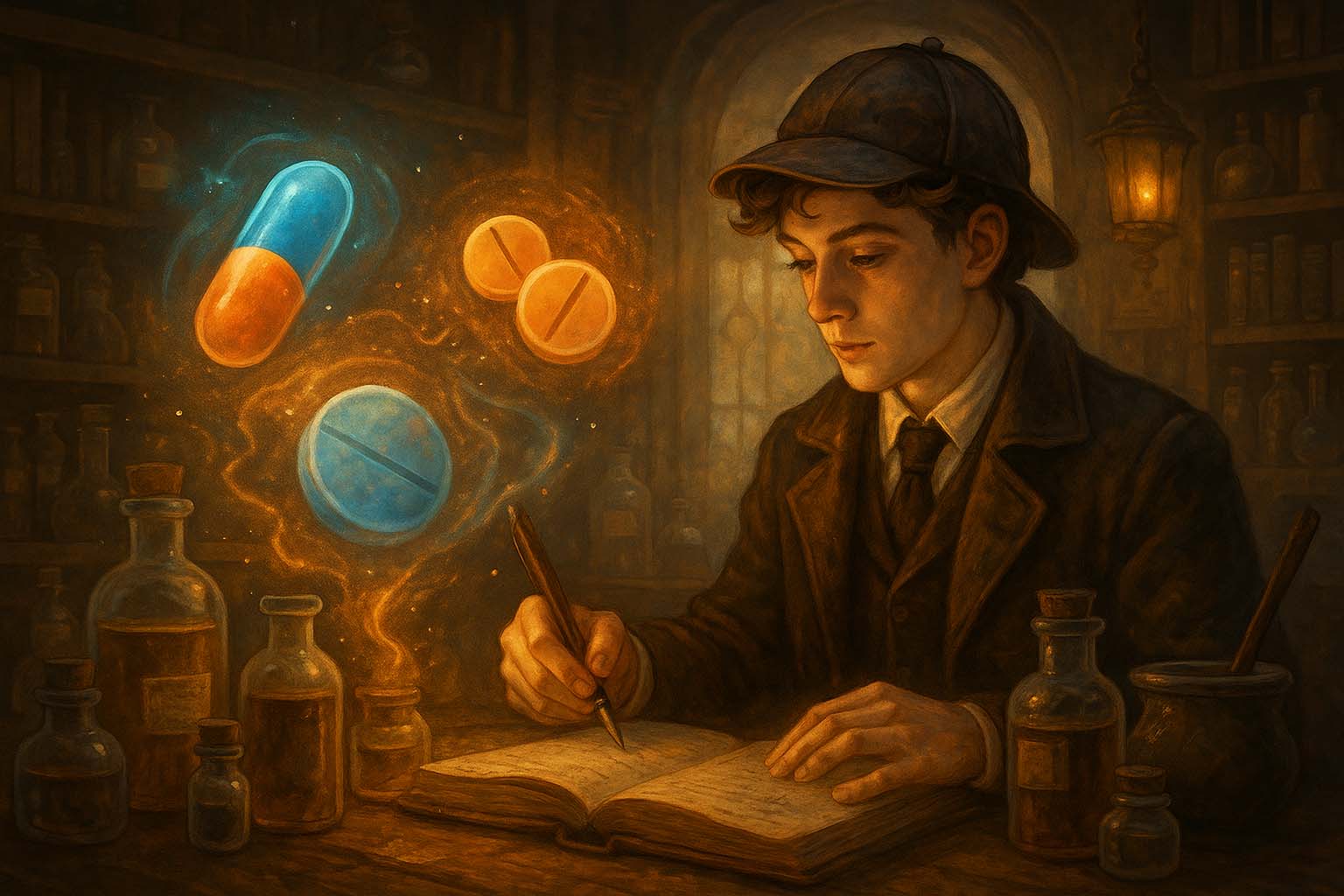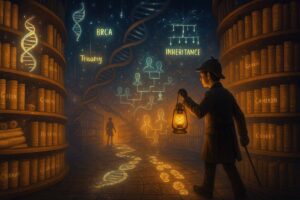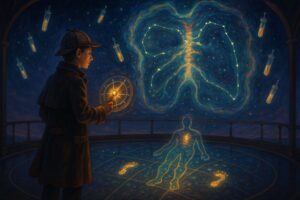
Clinical Pharmacology
- Posted by admin
- Categories Diagnostics & Interventional Medicine
- Date May 24, 2025
- Comments 0 comment
The Dose Detective’s Domain – Cracking the Cases That Balance Poison and Cure
1. Introduction: The Scene of the Specialty
Step into the shoes of a clinical pharmacology sleuth.
In the grand mystery of medicine, some detectives don’t just treat disease—they modulate it, molecule by molecule. Clinical pharmacologists operate in the invisible space between the prescription and the pulse. Their realm is one of paradoxes: the same drug that heals can harm; the right dose saves lives, the wrong one ends them.
Welcome to a world where every tablet tells a tale, and every side effect is a signal waiting to be read.
- Key Mysteries They Solve (Common Conditions)
These detectives specialise in solving cases involving:
- Adverse Drug Reactions – Is it the illness… or the intervention?
- Polypharmacy in Older Adults – Five pills, five interactions… and one confused patient.
- Therapeutic Drug Monitoring – How much is too much? How little is too late?
- Drug-Resistant Infections or Refractory Conditions – When first-line fails, they design precision plans.
Each case demands a fine balance of biochemistry, patient context, and clinical finesse.
- Their Trusted Tools & Techniques
Every detective has their kit—and in this specialty, tools may include:
- Investigative Instruments – Dose calculators, pharmacokinetic models, drug level assays.
- Digital Companions – Clinical decision support systems and interaction databases.
- Interviews and Intuition – Patient histories revealing self-medication, herbal use, or missed doses.
- Laboratory Logic – Liver and renal function, serum levels, and cytochrome profiles.
This isn’t guesswork—it’s chemistry, contextualised.
- The Charms of This Field: Why It Captivates the Curious
- The Alchemy of Accuracy – Small numbers, big decisions. A milligram too much, and everything shifts.
- Interdisciplinary Collaboration – Clinical pharmacologists advise intensivists, psychiatrists, paediatricians, and GPs alike.
- Personalised Medicine – From warfarin to immunotherapies, tailoring care to the genes and journeys of individuals.
- Clinical Diplomacy – Advocating for deprescribing or dosage change in a world full of defensive prescribing.
This is medicine’s moral middle ground—where effect meets ethics.
- Challenges: The Toughest Cases They Face
- Hidden Culprits – The over-the-counter tablet that caused the clot. The grapefruit juice that tipped the balance.
- Systems vs. Science – Formularies, approvals, and cost constraints that delay optimal care.
- Patient Perception – Mistrust of medications, vaccine hesitancy, or poor adherence.
- Polypharmacy Puzzle – Deciphering drug cascades in the elderly or chronically ill.
But the seasoned pharmacologist knows: The side effect is sometimes the clue.
- Famous Cases and Hallmark Clues
- The Thalidomide Tragedy – A drug once seen as a miracle, now a case study in teratogenicity and regulatory reform.
- The Grapefruit Effect – A citrus fruit that launched a thousand pharmacokinetic studies.
- The INR That Spiked Overnight – The warfarin patient who switched to a new tea—and nearly bled.
- Your Training Trail: How to Join the Investigation
To become a clinical pharmacology detective:
- Begin with general medicine, especially internal medicine and therapeutics.
- Dive into pharmacokinetics, toxicology, and evidence-based prescribing.
- Learn to consult across specialties—from psychiatry to surgery.
- Join medication review teams and therapeutic committees.
- Stay curious—because drug research evolves faster than textbooks.
Whether you’re investigating adverse events or championing rational use, this is the specialty where insight meets impact.
- Final Words: The Signature of the Clinical Pharmacology Detective
In the grand theatre of medicine, clinical pharmacologists aren’t just behind the scenes—they’re the ones setting the stage for safe, effective, and intelligent care.
They decode the molecule, weigh the moment, and ensure that what heals doesn’t harm.
So measure carefully. Listen intently. Follow the clues in the blood, the breath, and the body.
Because in this specialty, the difference between a remedy and a risk is only ever one step away.



